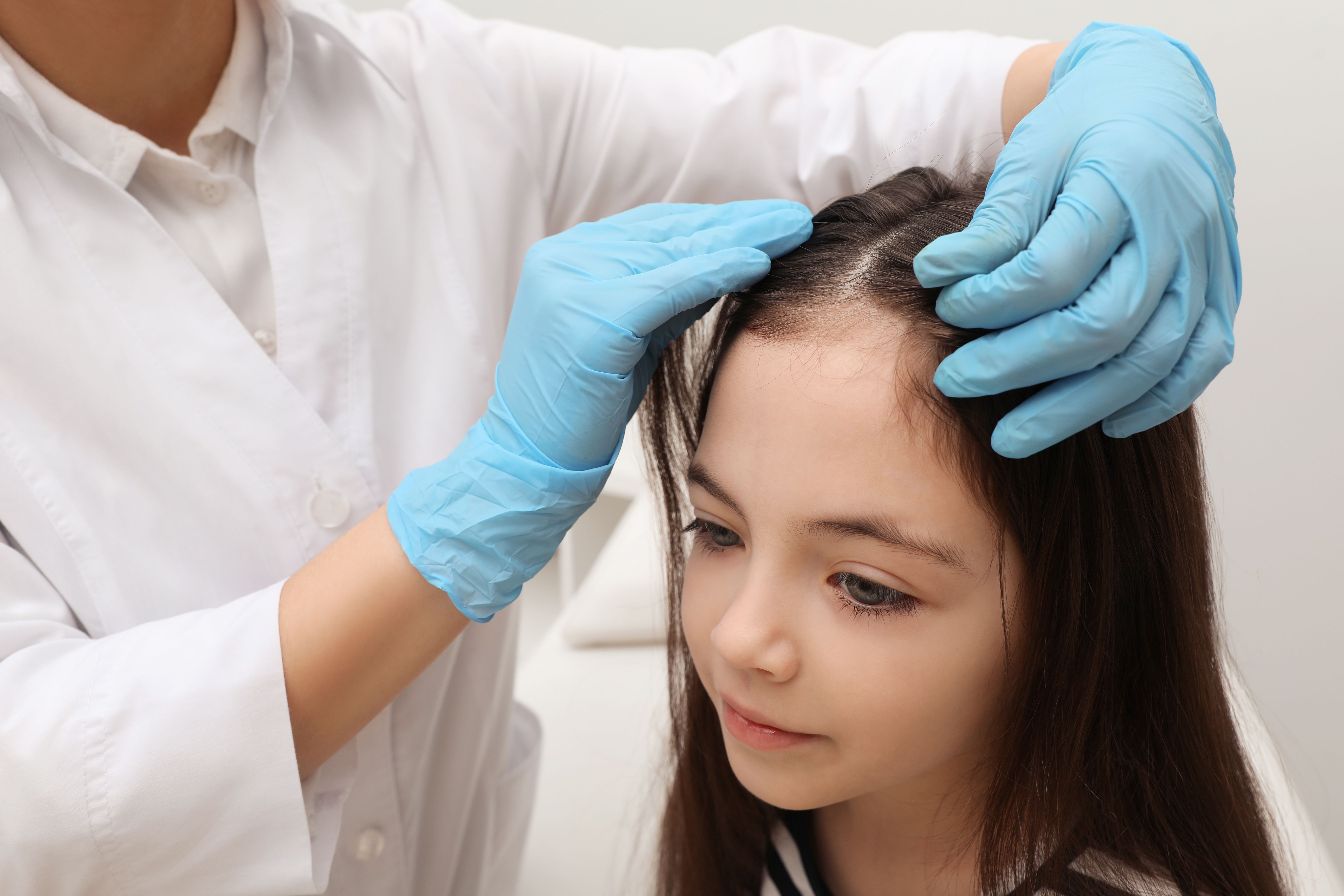- Center on Health Equity & Access
- Clinical
- Health Care Cost
- Health Care Delivery
- Insurance
- Policy
- Technology
- Value-Based Care
Topical Corticosteroids: The Preferred First-Line Treatment for Pediatric Alopecia Areata
A survey of pediatric dermatologists revealed that topical corticosteroids are the most common first-line treatment for children with alopecia areata, regardless of age or hair loss severity.
Doctor examining child's scalp | Image Credit: New Africa - stock.adobe.com

A survey analysis conducted among pediatric alopecia areata (PAA) dermatologists, found class 1 and 2 topical corticosteroids as the preferred first-line treatment therapy, whereas second-line therapy had differing results within the categorized demographics.
The FDA has not approved any therapies for treatment of PAA, making research in this space particularly valuable. When potential medication approvals for patients with PAA occur, this survey data will aid pediatric dermatologists’ (PDs) make more informed decisions regarding preferred therapies.
Out of 121 survey recipients, 53 responses were recorded, observed, and analyzed. Data were categorized between therapy of choice for children 8 years or younger and therapy of choice for children ages 8 years or older with AA. The 2 patient categories were divided based on the extent of scalp involvement (less than 25% or more than 25%), and the providers were categorized as either fellowship trained (FT) or nonfellowship trained (NFT). Therapies were catalogued based on how often they were prescribed as a first-line or second-line therapy.
For children aged 8 years or younger, FT PDs were most likely to choose class 1 topical corticosteroids as first-line therapy for all patients regardless of scalp involvement (< 25% involvement: 79.5%; > 25% involvement: 66.7%). Although NFT PD were also most likely to prescribe class 1 corticosteroids for patients with more than 25% scalp involvement (53.8%), they were most likely to prescribe class 2 topical corticosteroids for patients with less than 25% involvement (42.9%).
For children aged 8 years and older, both FT and NFT PDs preferred class 1 topical corticosteroids in patients with less than 25% scalp involvement (FT: 74.4%; NFT: 58.3%) and those with greater than 25% involvement FT: 50%; NFT: 61.5%).
The second-line therapy treatment preferences were not as consistent. Among FT PDs, intralesional triamcinolone was the most common second-line therapy for children 8 years or younger with less than 25% scalp involvement (46.2%). However, FT respondents were most likely to choose oral methotrexate for patients 8 years and younger with more than 25% scalp involvement (38.5%). NFT respondents leaned toward topical minoxidil 5% solution for patients with more than 25% involvement (53.8%) and intralesional triamcinolone for patients with less than 25% involvement (76.9%).
However, for children 8 years and older with less than 25% involvement, intralesional triamcinolone was the most common second-line therapy among both FT and NFT providers (FT: 46.2%; NFT:76.9%). For children 8 years and older with more than 25% scalp involvement, oral methotrexate (FT: 43.2%) and minoxidil 5% solution (NFT: 46.2%) were the most preferred second-line therapy among FT and NFT providers, respectively.
Study limitations included selection bias, potentially hindering the measure of association and may not have accurately reflected the targeted population. The sample size was also skewed towards junior respondents’ perception. The length of the therapeutic trial, types of counseling practices, and any long-term monitoring was neglected within the study.
The survey data is significant to general practitioners treating AA by demonstrating the consistent practice patterns depicted. Additional drug safety and efficacy studies with topical and oral Janus kinase inhibitors for patients with PAA are necessary to continue successful research.
Reference
Bitterman D, Bitterman D, Sink J, et al. Survey of pediatric dermatologist views on treatment for alopecia areata. JAAD Int. 2023;13:71-73. doi:10.1016/j.jdin.2023.06.016
The Breakdown: Breast Cancer Research Awareness Day
August 19th 2025Breast cancer is the second most common cancer among women and the second leading cause of cancer-related deaths among women in the US. In light of Breast Cancer Research Awareness Day, The American Journal of Managed Care® breaks down the most recent advancements in breast cancer prevention, screening, and therapies.
Listen
